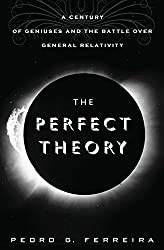
Rating: 8.5/10.
Book by Lee Smolin describing modern theoretical physics, which is dominated by string theory. String theory arose in the 1980s as an elegant theory claiming to unify quantum mechanics and general relativity, and explain the complicated standard model using strings. However, the math is very complicated, and in order to be consistent with reality (like not have protons blow up), you need to have many extra dimensions that are “curled up” so to be undetectable. It turns out that there are a lot of free parameters to describe the geometry of the extra dimensions, so the result isn’t much nicer than the standard model.
The trouble with string theory is that it doesn’t make any concrete predictions that can be tested with experiment. There’s not a single string theory, but rather a landscape of 10^500 different versions of it, so you can probably find some version to be consistent with any conceivable experimental result. In 2003, an observation of positive cosmological constant seemed to contradict most versions of string theory, which predicted it to be zero, but soon, string theorists found some contrived way of tuning parameters of the theory to produce a positive cosmological constant. Thus, many scientists became disillusioned that a theory that can predict anything isn’t really a theory at all. Ever since string theory took over theoretical physics 30 years ago, there’s been basically no progress in our fundamental understanding.
There are sociological problems with the field, too. Theoretical physics is dominated by string theory, so it’s difficult for competing directions like quantum gravity to get prestigious academic positions. String theorists are overconfident that their theory is the correct one, and take results that are conjectured and only proven in the special case, and treat them as true. The author argues that there needs healthy disagreement in the community for science to progress, otherwise it’s no different from religion or astrology.
Quite a thoughtful read that makes you ponder the nature of science, which is very much a human endeavour. Fortunately my field doesn’t appear to suffer from the problems as theoretical physics. The math of string theory is intense, and to even begin studying it, you need to deeply understand general relativity, quantum mechanics, and more, so to really understand why you need 11 dimensions is probably impossible unless you’re a graduate student in physics; still, this book gave a good understanding of the forefront of this field.



